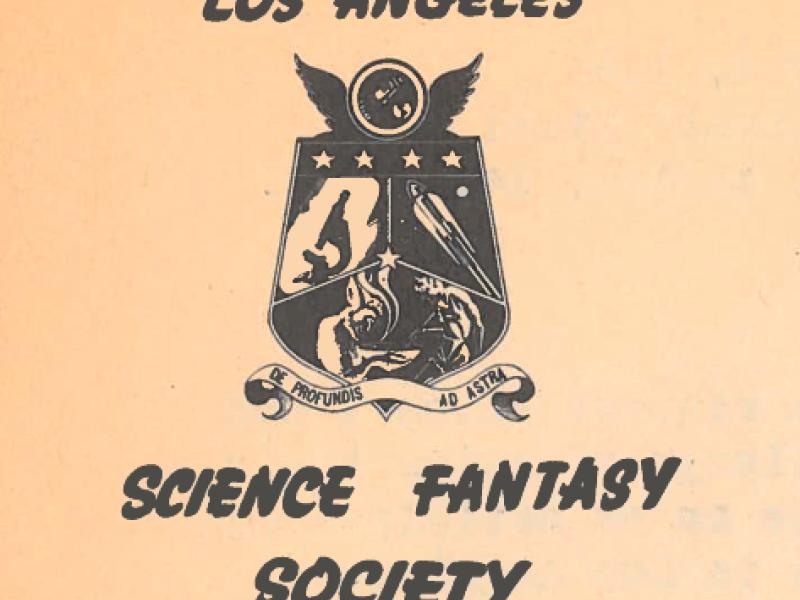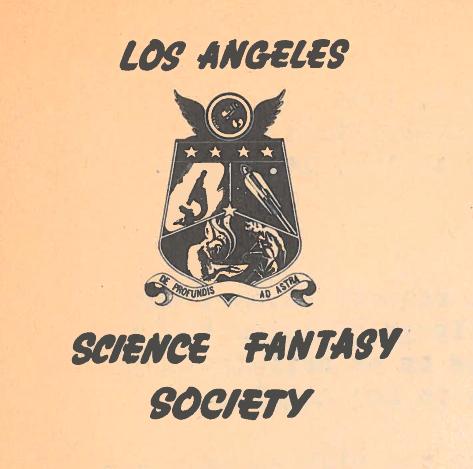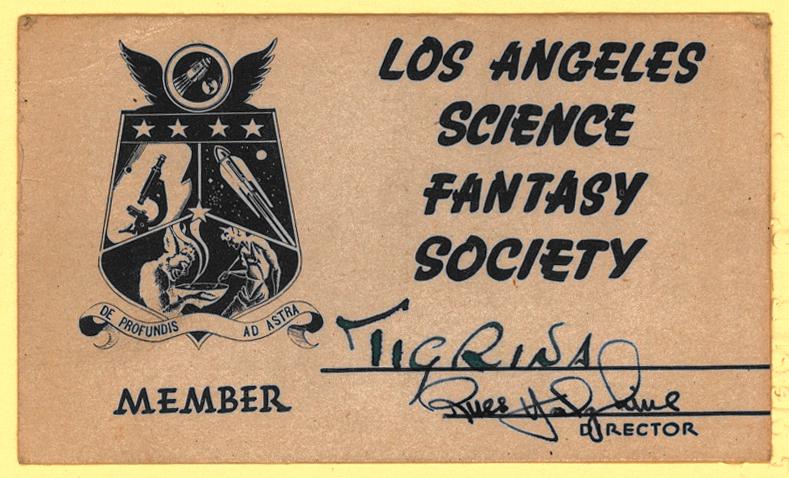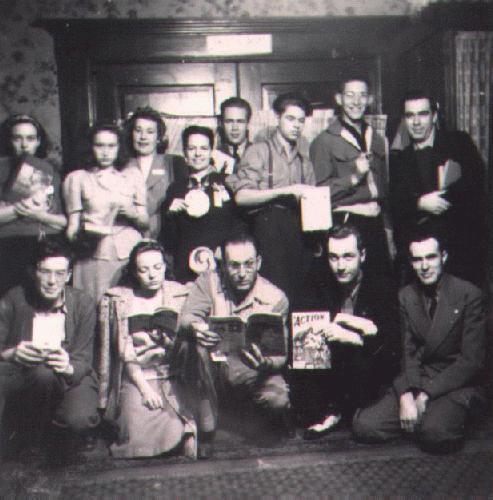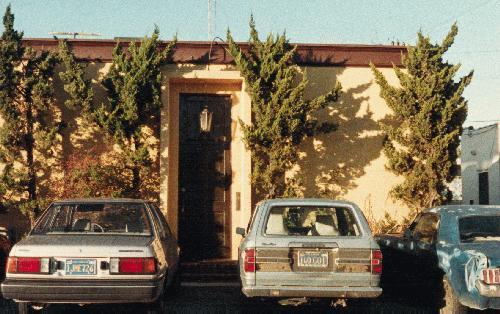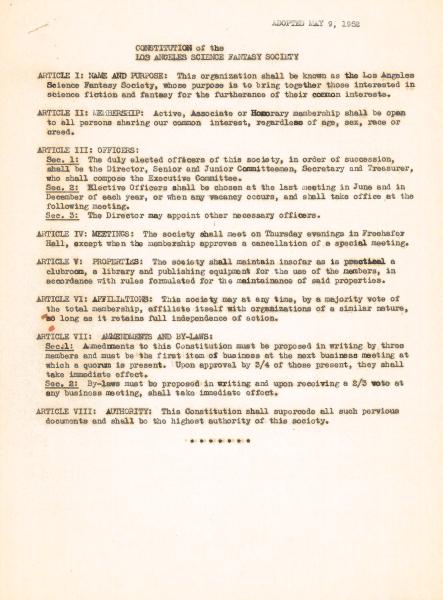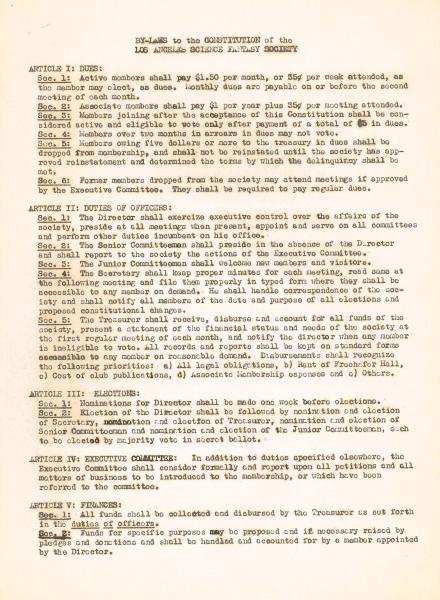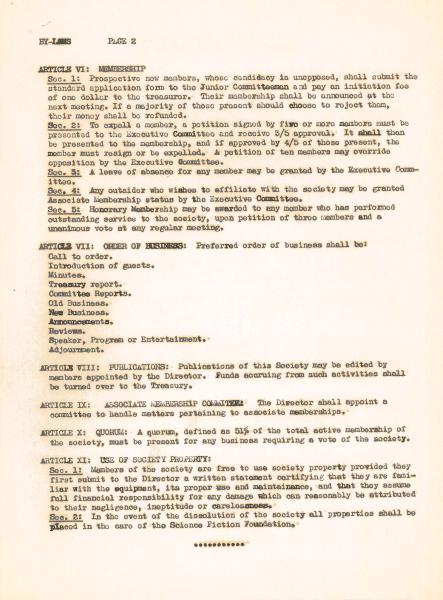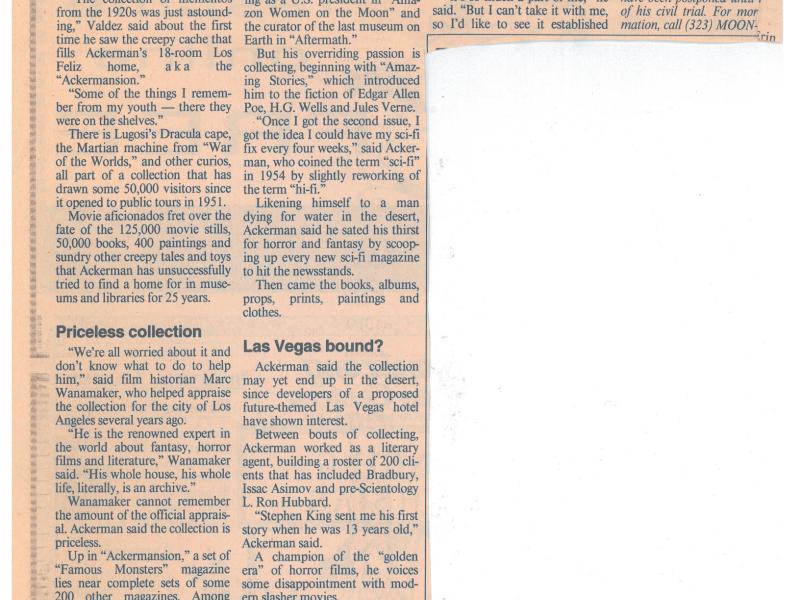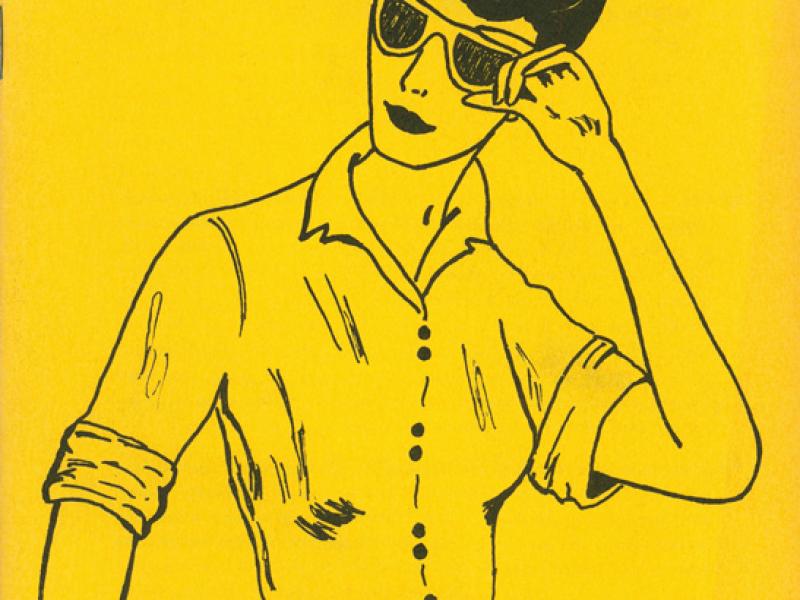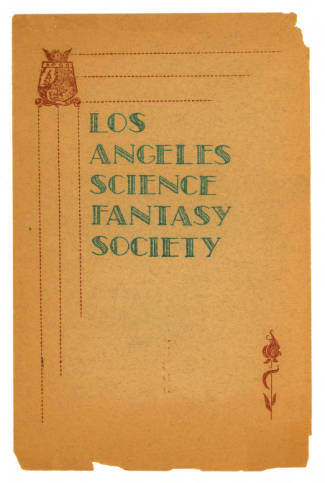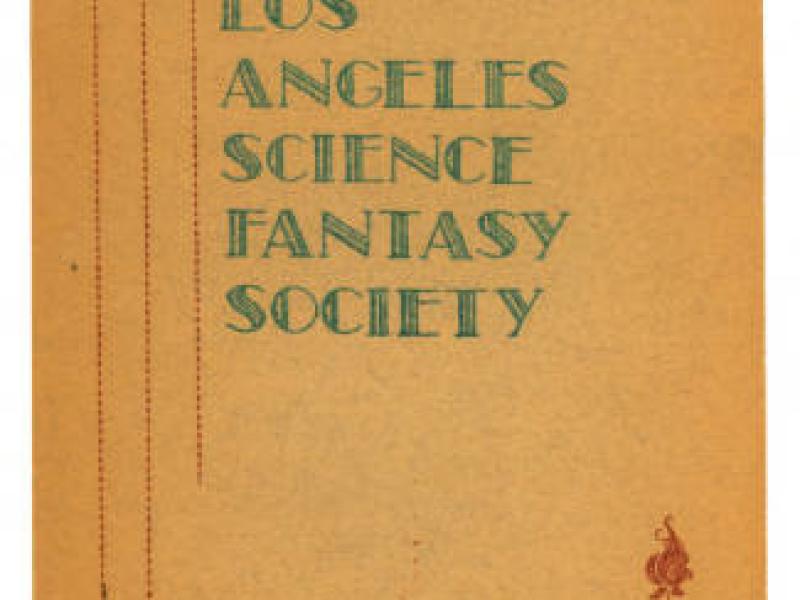This club for fans of anything related to science-fiction and fantasy gathered a number of people of interest, such as Forrest Ackerman, the science-fiction fan who gathered thousands of memorabilia from all sorts of science-fiction and horror films in his house, the Ackermansion, while also writing stories himself, sometimes as his lesbian alter-ego, Laurajean Ermayne. His good friend and former partner Myrtle Douglas, or Morojo in her Esperanto name, also known as the “Mother of Cosplay” for creating the very first example of it for the First World Science Fiction Convention in New York (Culp). James Kepner was also a prominent member of the club, and later in his life wrote for One Magazine, while his research eventually led to the creation of the ONE Archives. Finally, Edythe Eyde, also known as Lisa Ben, or Tigrina in the Science-fiction world, also made her first steps in the LASFS with a mimeograph, before moving on to her own publication of the first lesbian magazine, Vice Versa. In this short article, names such as those of T. Bruce Yerke or Francis T. Laney will also be mentioned, as they both gave information and criticism about the society itself, although they did not reach the same posterity as the aforementioned figures.
Laney describes the club as a 14x16’ storeroom, part of the Wellman Apartments, which entrance was at 637 ½ South Bixel Street (Laney, 33). He gives a description of the inside that goes as follows (Laney, 33):
“The room is a blend of pigsty and monk's cell. When I first saw it, it was even worse than it is now, since many of the members were using the place as an office, and their personal Papers and other impedimenta were strewn around in careless abandon. There was an austere and extremely dirty couch in one corner, and a rickety old square table covered with typewriters and loose papers. A large mimeograph sat on an upended fibre barrel, and another similar barrel was packed to the bursting point with wastepaper. A couple or three ramshackle home-made bookcases filled-with tattered magazines, and 25 or 50 uncomfortable folding chairs comprised the remainder of the furnishings. The shortcomings of the room and contents were made even more apparent by the pitiless glare of six or eight naked light bulbs set in sockets around the wall. The floor was a welter of cigarette butts and other trash, not the least of which was the filthiest and most badly worn out rug I have ever seen.”
Laney also indicates that many of the club’s members lived close by: “Brown and Kepner across the street at 628, Morojo next door at 643” (Laney, 42).
Yerke, in his memoirs, gives more information on the club’s past, before it was moved to 637 ½. The LASFL “of 1937” was then located in 236 ½ North New Hampshire Avenue. He points out that the people that gathered there then were however very different from those who would become the center of the LASFS, as only Ackerman and himself would be the “survivors” from the founding LASFL. Back then, the LASFL would meet every 1st and 3rd Thursday of each month, at the Clifton Café, located at 648 South Broadway, in downtown Los Angeles.
It seems important to point out the fact that all the people mentioned in the abstract are the reason why the LASFS seems important to include in this Queer Terrains project, as they all started their publishing work, and generally organizational skills, in the LASFS, where each of these people would alternatively be director, secretary, treasurer… those skills were surely used later on to produce the LGBT-focused material that they became famous for. Beyond that, it is also worth pointing that the LASFS’s great sense of inclusivity is part of the reason why it had so many detractors. To quote Francis Laney (Laney, 44):
“The lack of solidarity among the membership was utterly beyond belief. Absent members were discussed more with license than with freedom--and it did not take too long for one to get heartily tired of hearing this anvil chorus; A month of it left one very well informed as to which members were sodomists, impotents, alcoholics, manic depressives, phallic succubi, communists, masturbators, overt devil worshippers, lesbians, and other quiant forms of life. Oddly enough, it did not require more than an elementary ability to count to become aware that the freaks were definitely in the ascendancy. This sad lessons in the Facts of Fan Life was sharply pointed up by the parade of homosexuals constantly being dredged up in Pershing Square and brought around the club by one of the residents at 628.” (emphasis added)
He also adds (Laney, 51):
“[…] there was a marked anti-homosexual feeling held by several members. It must be remembered that the club had from two to-four active homosexuals in its membership at all times, that one of the most active members of the club was also its most vocal homosexual, and that he was continually bringing other fags around the club.”
The person that Laney seems to hint at in both quotes, who brought homosexuals around the club, and “was continually bringing other fags around the club”, is most likely Jim Kepner, who is described in the issue 17 of Shangri-L’affaire as “that intrepid explorer, Jimmie Kepner, who is familiar with the wilds of the [Pershing] square.”
Finally, Laney gives a last, long example of encounters with homosexuals who were cruising around the neighborhood and found their way to the club:
“Also during the post-club pre-Outsider interregnum I had a most amusing brush with one of the club queers, a character who from sponging off one of the residents at 628 had taken to hanging around the club. The moment the fruit saw Ackerman, he fell madly in love with 4sj. Ackie, with his all-inclusive brother love for anyone supposed to be a fan, probably did not even realise that the guy-was a fairy, and most certainly did not realise that he, Forrest J Ackerman, was the object of the nence's unrequited yearnings. He saw in this pansy an industrious new fan, sincere, unassuming, and worthy. The poor swish spent the next three or four weeks drawing for VGM, cutting stencils for it and SHAGGY, and even running the mimeograph for Ackerman. He finally gave up and commenced trying to make some of the others of us. I was alone in the club one afternoon, trying to finish up my ACOLYTE work, when I smelled an overpowering whiff of very cheap perfume. Turning around, I saw this dear fruit standing clear across the room from me. He immediately commenced a gambit, which I cruelly egged on until he was thoroughly committed---then burst out at him with a full-voiced roar of the well-known Laney laugh, a reaction which caused him to leave looking, believe it or not, rather deeply hurt. Faugh!” (Laney, 69)
